
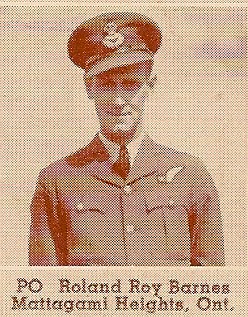
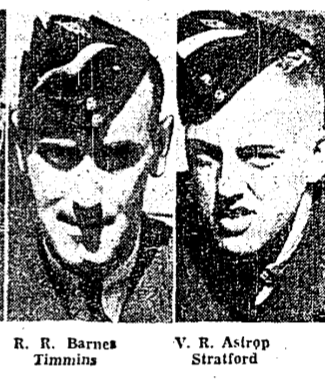
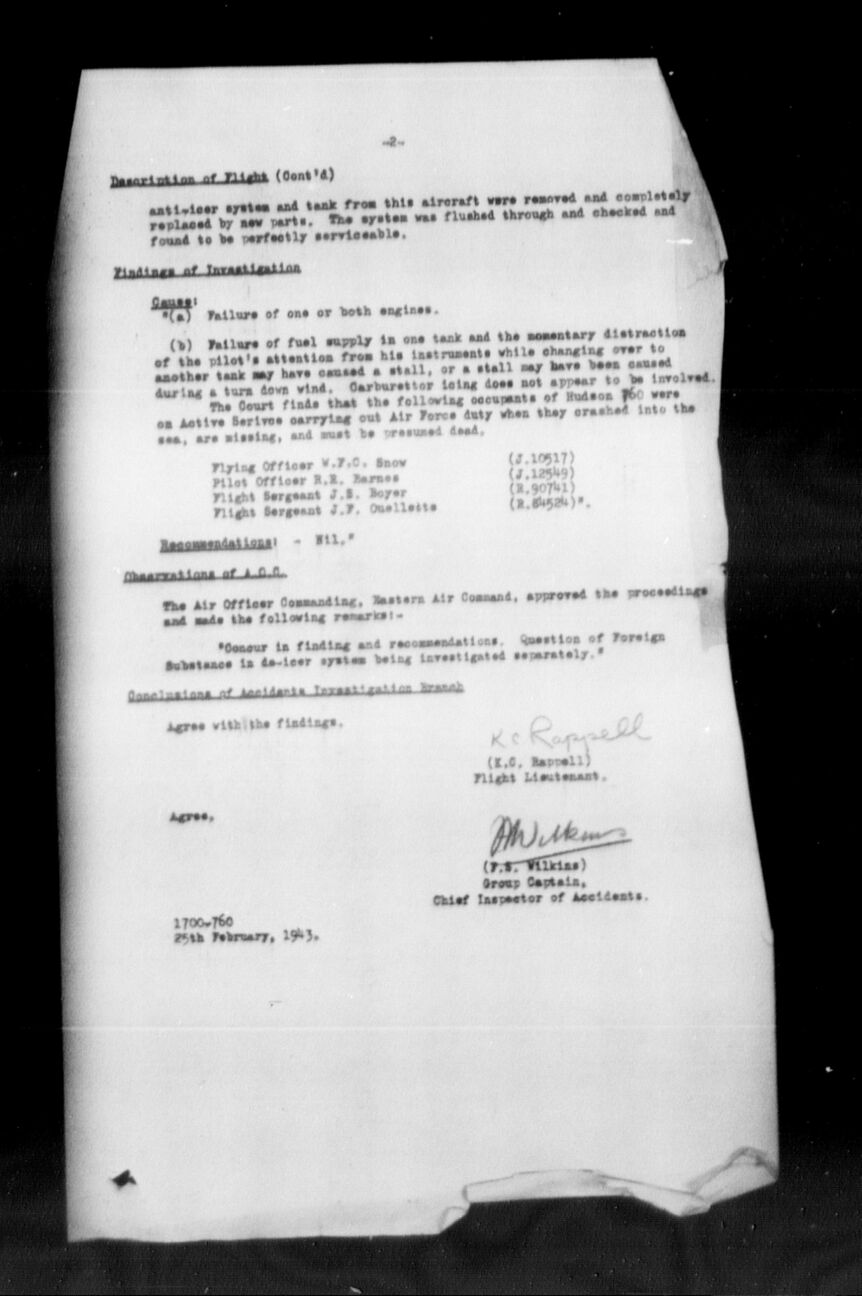
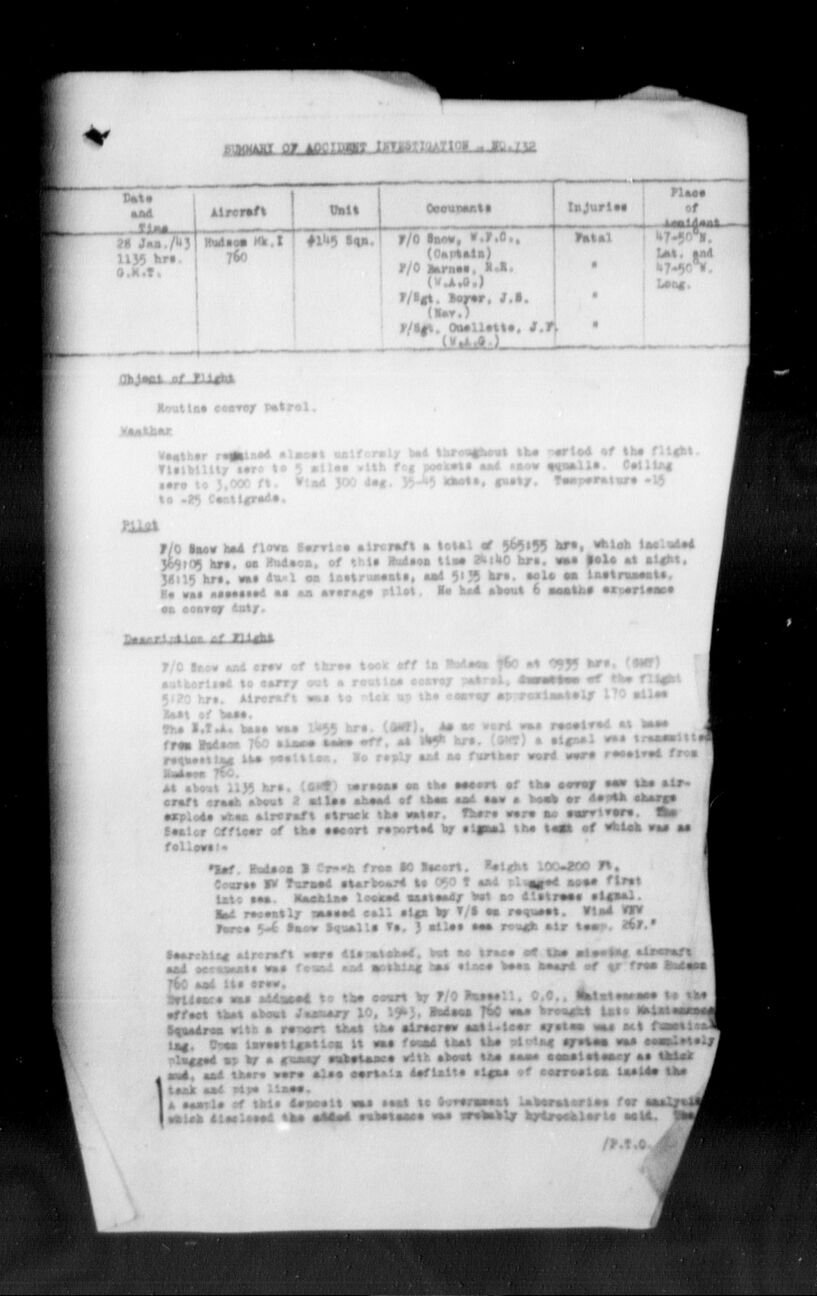
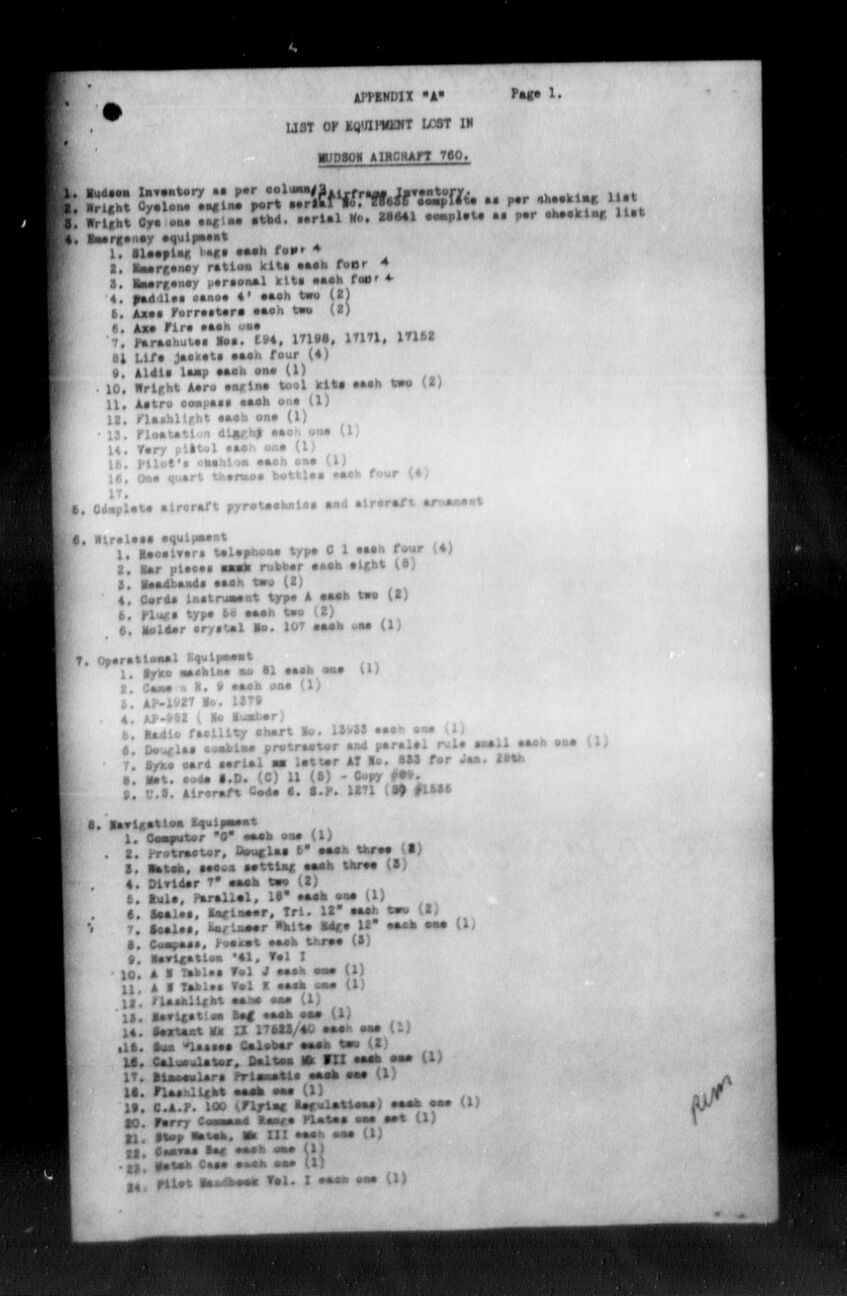
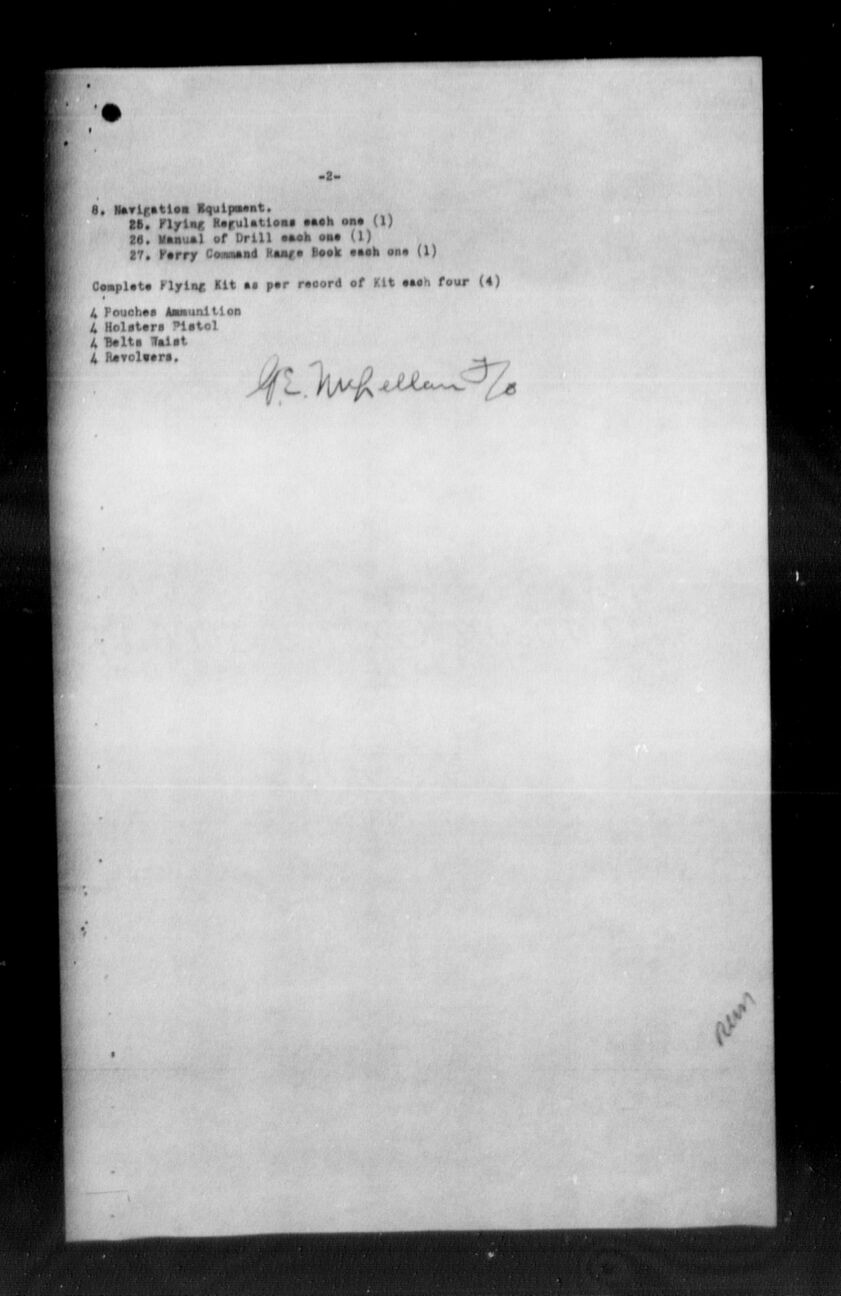
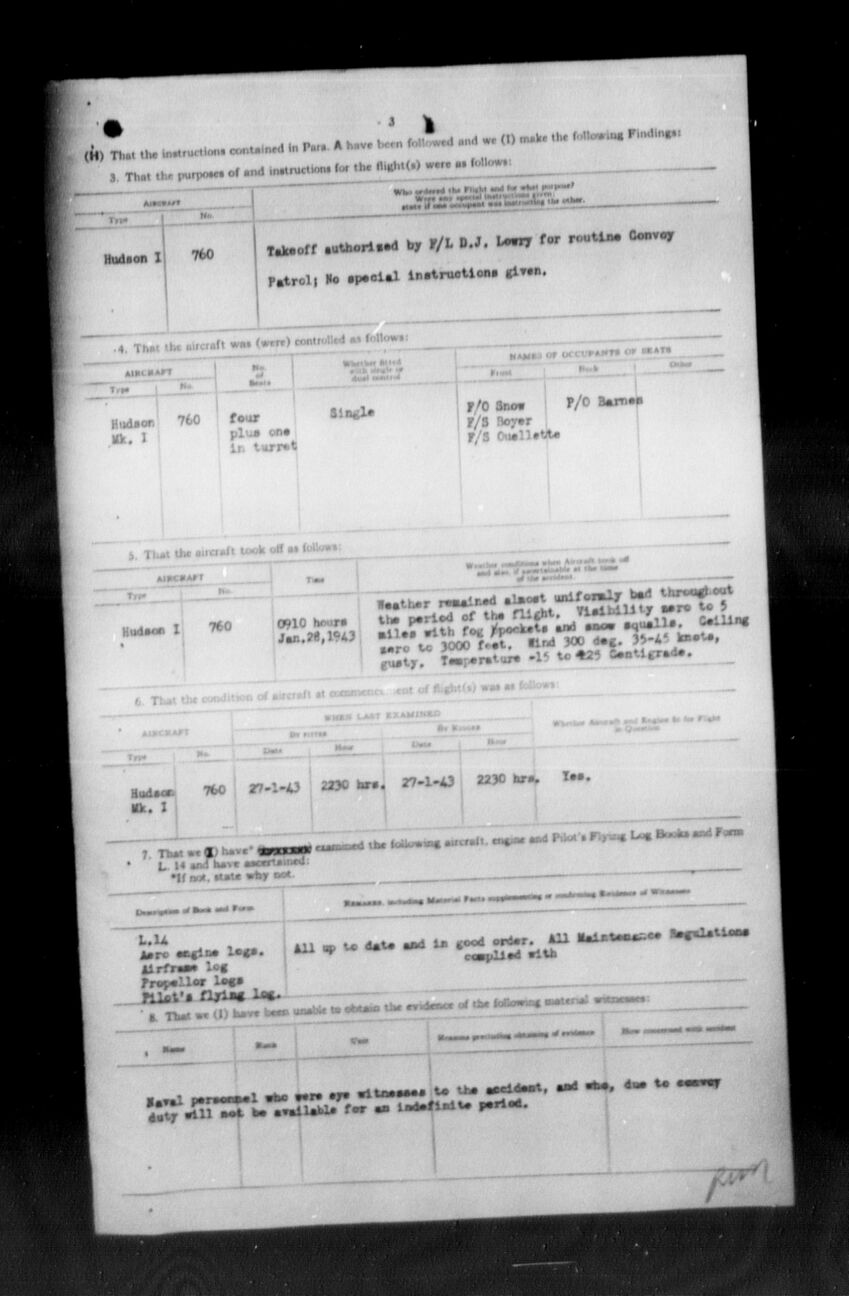
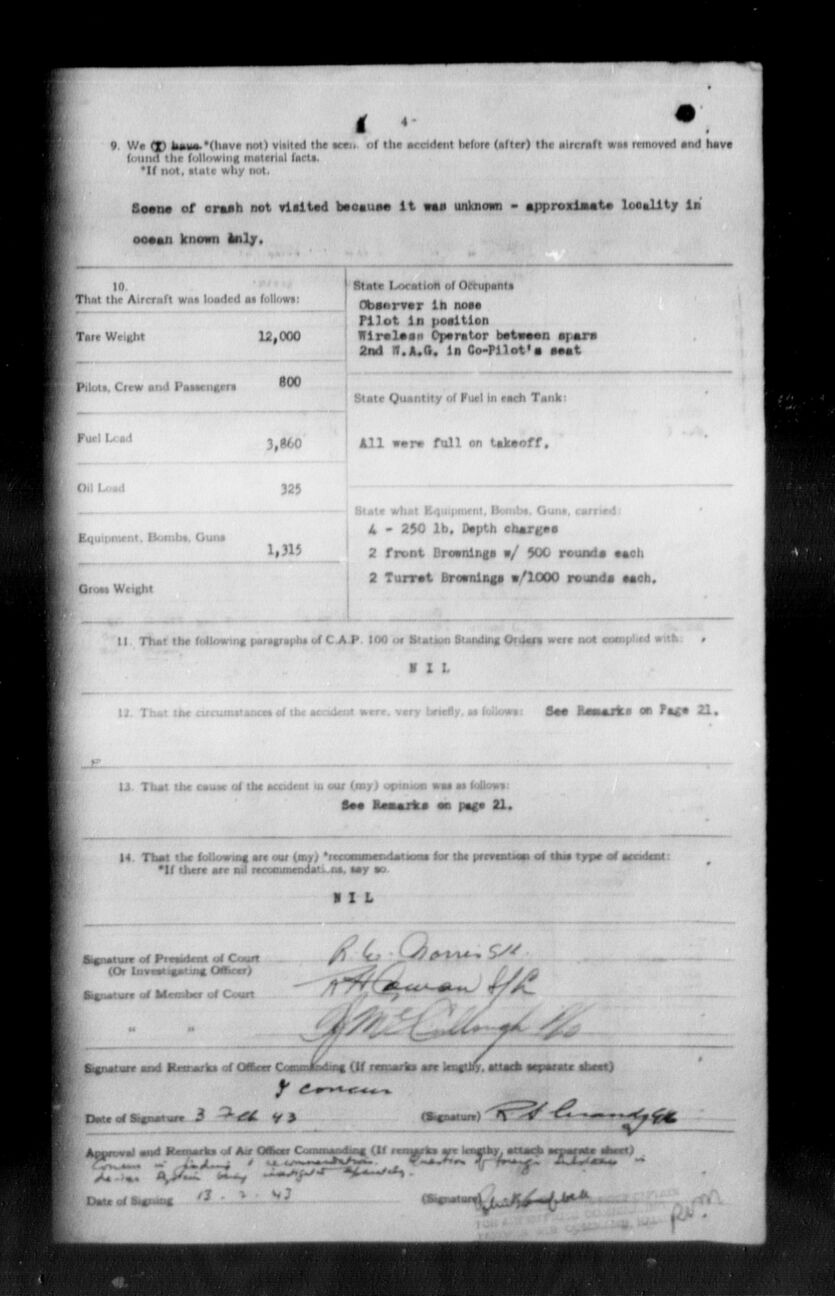
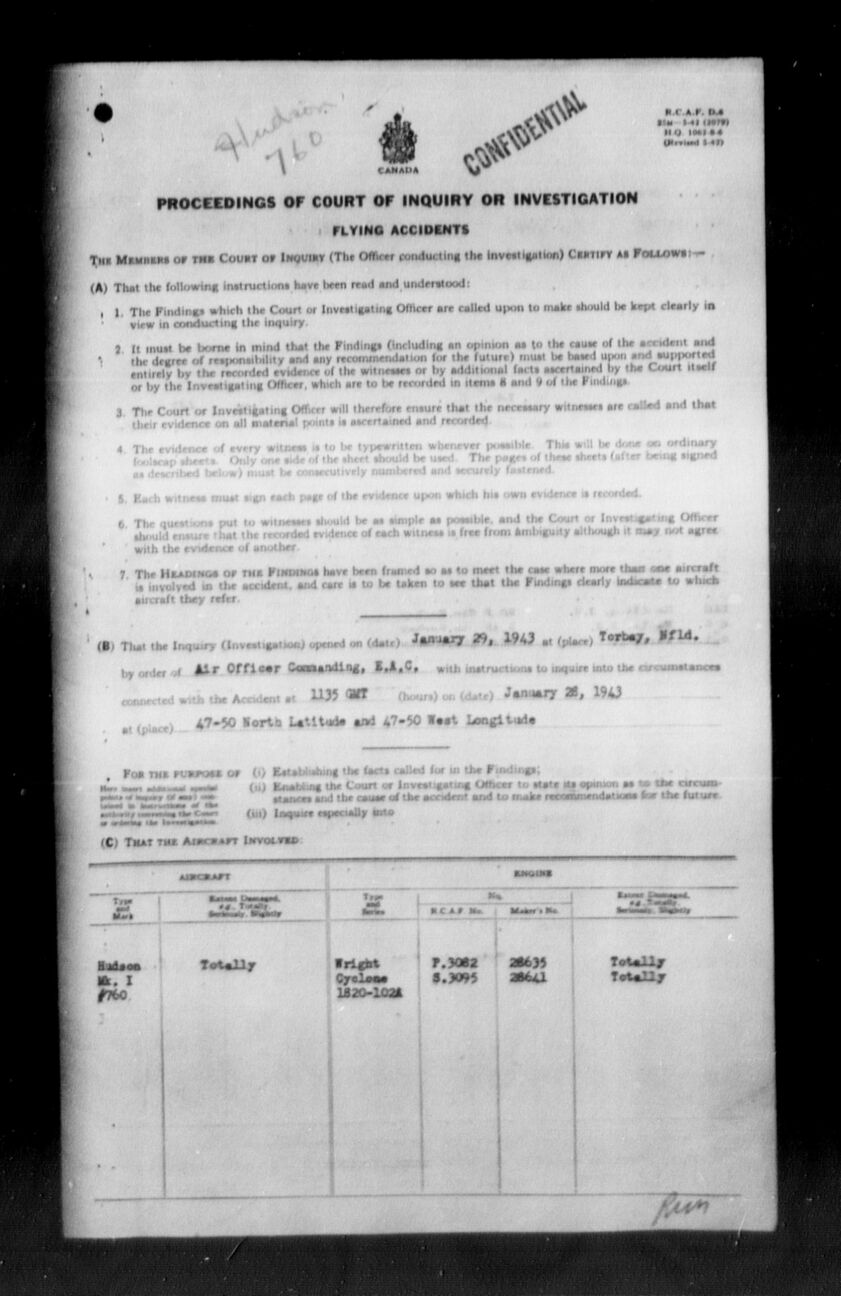
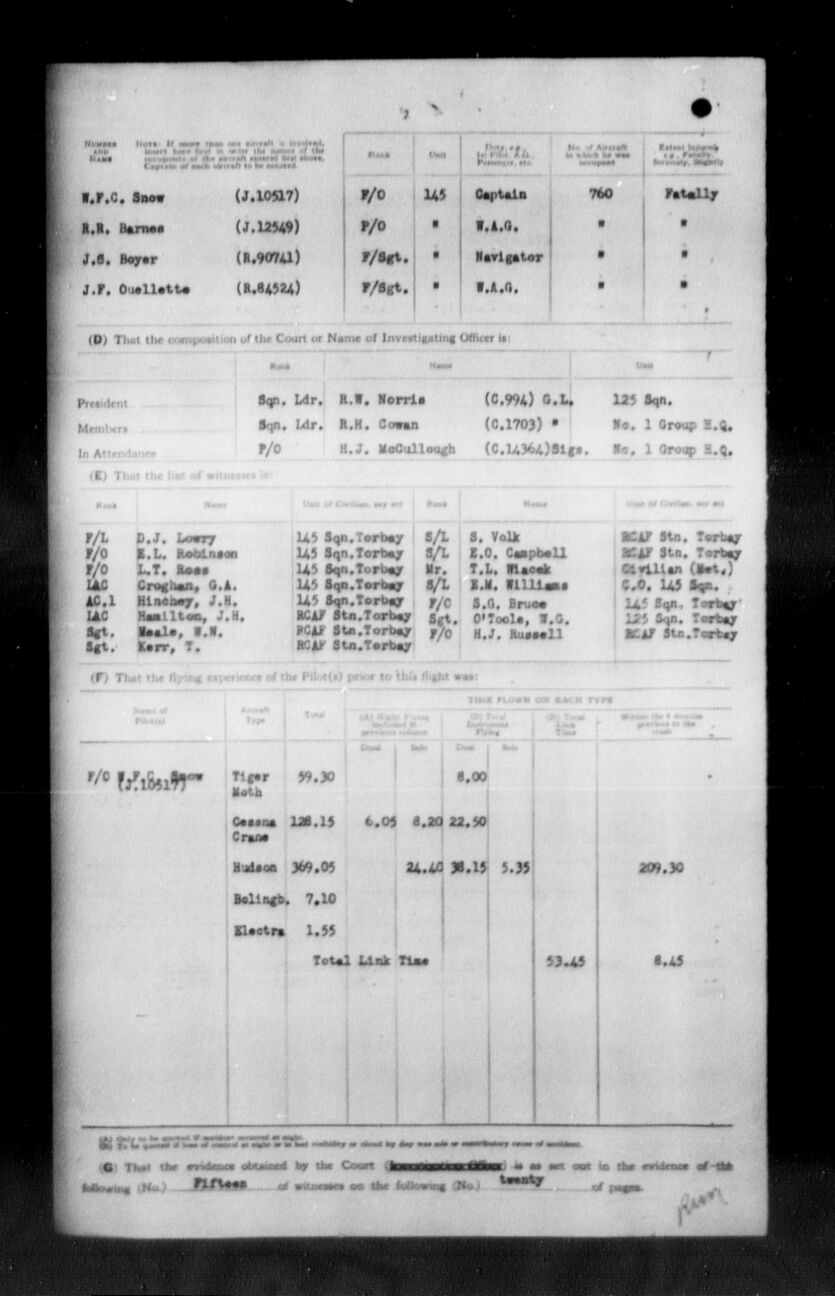

November 13, 1911 - January 28, 1943












Roland Roy Barnes was born in Molus River, New Brunswick to Ida Clare (nee) Barnes and William Leonard Barnes, farmer. He had four brothers: Ralph, Mervyn, Eric, and Fred. Mervyn and Eric were both in the RCAF. (His father’s whereabout were unknown in 1943.). The family was Presbyterian.
He enlisted in North Bay, Ontario on May 16, 1941. He had been working for Holinger Mines , Timmins, Ontario, as a miner of gold, underground. He hoped to be a wireless operator after the war.
In 1940, he had forty stitches on his right shin when his leg was slashed with a motor boat propeller, leaving a 6” scar. He smoked 10 cigarettes per day and moderately drank alcohol. He stood 5’11” and weighed 165, had brown hair and brown eyes. His physique was considered to be athletic and his mentality: “bright talent.” He was “good physical material for air-crew. Candidate is alert, emotionally stable. Should make good WOAG.”
He liked to swim, row, and skate. His hobby was photography. Roland took out $3,500 in life insurance, with $800 payable to his youngest brother, Fred.
Roland began his journey though the BCATP at No. 1 Manning Depot, Toronto, Ontario on August 16 until August 20, 1941.
From there he was sent to No. 4 Wireless School in Guelph, Ontario from December 12, 1941 to June 8, 1942, Course 33. He was 46th out of 123 in class and earned an 81.8%.
From June 8 until July 6, 1942, he was at No. 1 B&G School, Jarvis, Ontario. He was 19th out of 28 in armament training. “Keen. 12th out of 28. Energetic youngster, sociable with average sense of responsibility. Unsuitable for commissioned rank.” He received his Air Gunner’s Badge.
Roland was then sent to RCAF Station, Torbay, Newfoundland, July 26, 1942. By December 1942, he was with 145 Squadron at Torbay.
On January 28, 1943, Hudson 760, No. 145 Squadron, crew F/O William Field Creighton Snow, Captain, J10517, F/O R. R. Barnes, WAG, J12549, F/Sgt Jack Sinclair Boyer, Navigator, R90741, and F/Sgt Joseph Edmond Ouellette, WAG, R84524, took off for a routine convoy patrol. Snow had about six months on convoy duty and was assessed as an average pilot. Observer was in nose, pilot in position, WO between spars and 2nd WAG in co-pilot’s seat. Four -250-pound depth charges were on board as were four Brownings, fully loaded. This aircraft was detailed to provide protection to an east-bound convoy which was in a danger area.
Memo: “A/C dived into the sea and blew up on contact two miles ahead of convoy and 200 miles from base. Bodies not recovered.”
A Court of Inquiry was struck, and fifteen witnesses were called. F/O L. T. Ross, pilot in the convoy noted that his crew had contacted the convoy escort, exchanging recognition signals, experiencing considerable difficulty in counting the ships in the convoy due to poor visibility. The sea was very rough and the air above the sea was also very rough. There were snow squalls, fog and intermittently poor visibility and bumpy air conditions.
Description of Flight: “F/O Snow and crew of three took off in Hudson 760 at 0935 hours authorized to carry out a routine convoy patrol. Aircraft was to pick up the convoy approximately 170 miles east of base. As no word was received at base from Hudson 760 since takeoff, a signal was transmitted requesting the position. No reply and no further word were received from Hudson 760. At approximately 1135 hours, persons [Navy] on the escort of the convoy saw an aircraft crash about 2 miles ahead of them and saw a bomb or depth charge explode when aircraft struck the water. There were no survivors. The senior officer of the escort reported by signal the text of which was as follows: “Height 100 to 200 feet. Course NW, a/c banked to starboard away from wind, flattened out on course of 050 degrees and plunged nose first into the sea. Machine looked unsteady but no distress signal. Had recently passed call signs by V/S on request. Snow squalls, 3 miles rough sea; air temperature 26F.” Searching aircraft were dispatched but no trace of the missing aircraft and occupants was found and nothing had since been heard of from Hudson 760 and its crew.
“Maintenance to the effect that about January 10th 1943, Hudson 760 was brought into maintenance squadron with a report that the air crew anti-icer system was not functioning. Upon investigation it was found that the piping system was completely plugged up by a gummy substance with about the same consistency as thick mud, and there are also certain definite signs of corrosion inside the tank and pipelines. A sample of this deposit was sent to Government laboratories for analysis which disclosed the substance was probably hydrochloric acid. The anti-icer system and tank from this aircraft were removed and completely replaced by new parts. The system was flushed through and checked and found to be perfectly serviceable.”
FINDINGS OF THE COURT: A. Failure of one or both engines. B. Failure of fuel supply in one tank and the momentary distraction of the pilot’s attention from his instruments while changing over to another tank may have caused a stall, or a stall may have been caused during a turn downwind. Carburetor icing does not appear to be involved. The Court finds that the occupants of Hudson 760 were on Air Force duty when they crashed into the sea; they are missing and must be presumed dead.”
“Scene of crash not visited because it was unknown. Approximate locality in ocean known only. Until more detailed information of aircraft’s attitude at time of crash is received, it is not possible to even hazard a guess as to cause of crash. Cause of depth charged exploding is not clear unless they were torn loose from carriers on impact.”
For full account, please visit https://heritage.canadiana.ca/view/oocihm.lac_reel_t12340/4778?r=0&s=2
In October 1955, Mrs. Barnes received a letter informing her that since Roland had no known grave, his name would appear on the Ottawa Memorial.